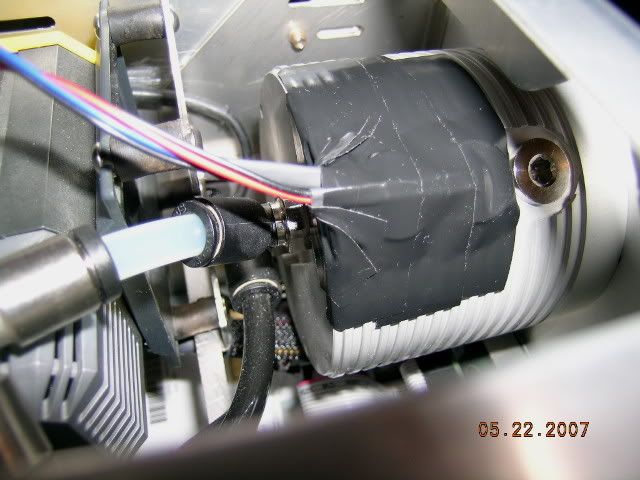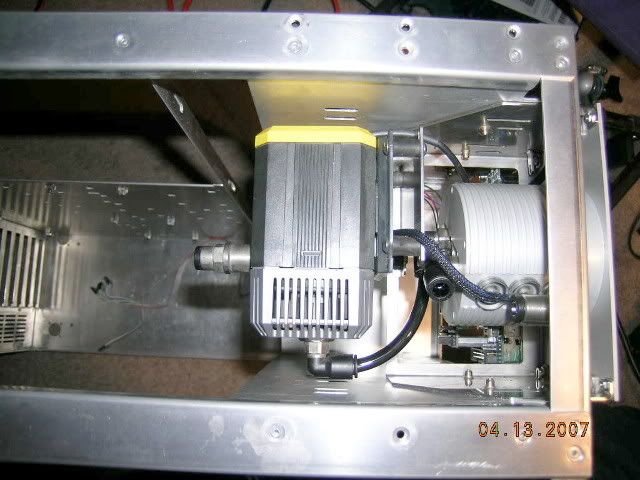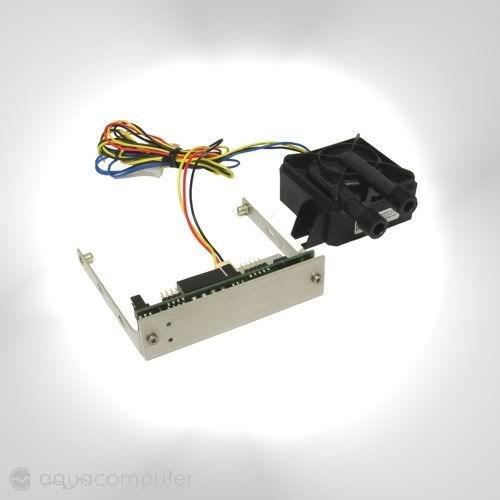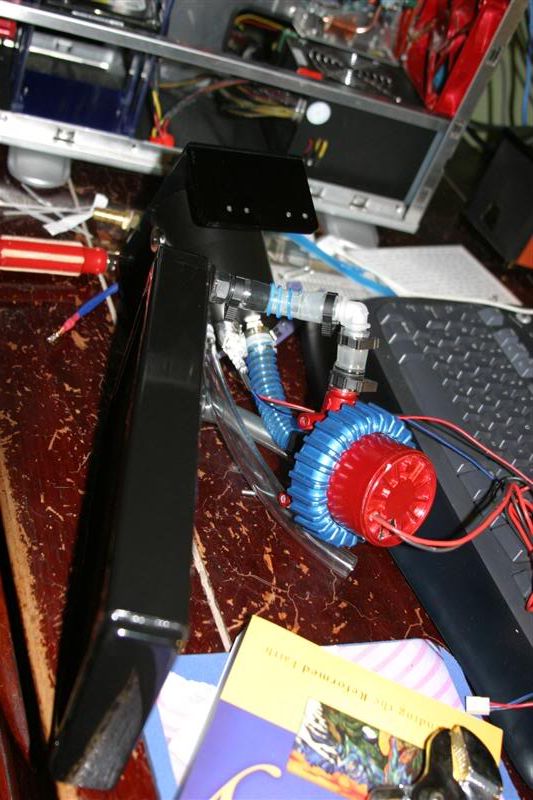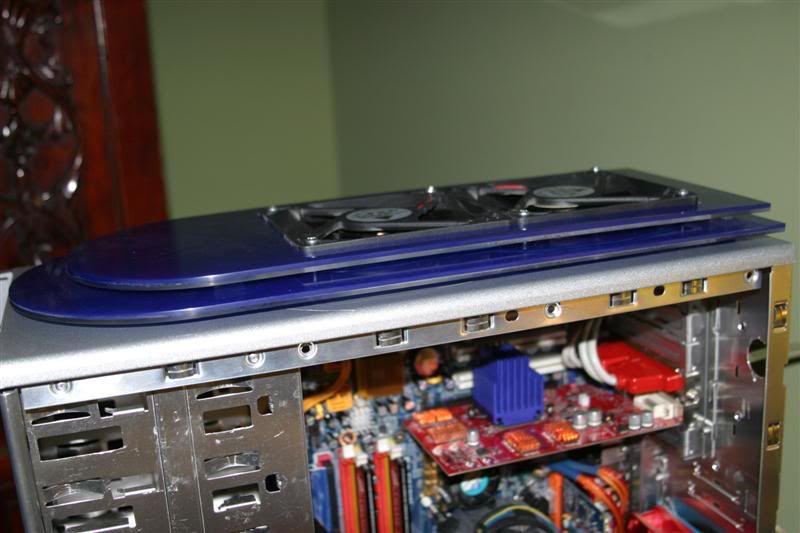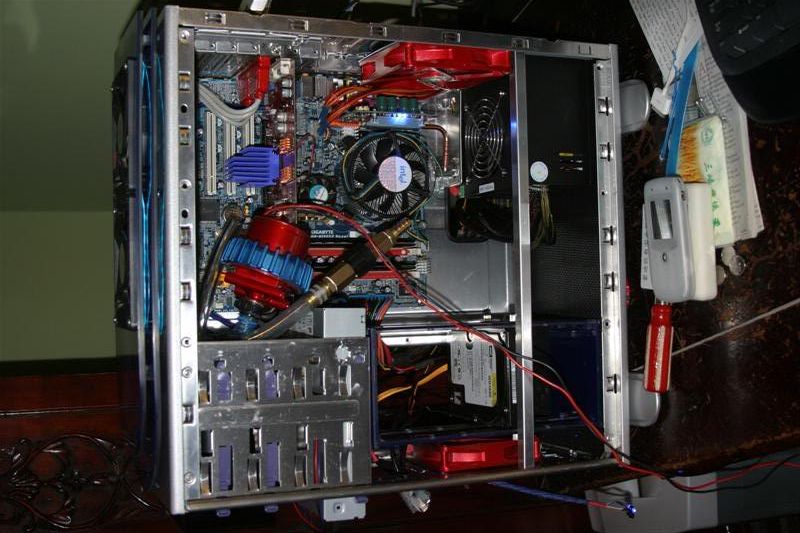DarkenReaper57
2[H]4U
- Joined
- Oct 2, 2003
- Messages
- 2,173
There has been some heated debate over the impact of tubing size given an optimal pump+radiator+block setup, mostly in the thread started by Cathar. If memory serves me right, 90 degree elbows came up in that discussion as well, and their overall impact seemed to be negligible - something about 0.1C net increase for every elbow.
I'd like to take this time to thank Cathar for taking his own time and putting together all of the work he has done on the matter. I know he has received quite a bit of heckling, but he means well and simply wants to expose the myths.
That said, the research done was using more modern equipment, and am not sure whether or not it applies to my particular setup. My rig is in my signature, but here are my w/c components:
Pump: AquaXtreme 50Z
Tubing Size: 7/16" ID
Blocks: D-tek WhiteWater CPU block, Older modded D-tek GPU block
Reservior: Criticool Waterplant 6" with 1/2" ID barbs
Quick Disconnects (2) - Made by Colder
Heat Exchangers: (1) 77' Bonneville Heater core in series with (1) 86' Chevette Heater core
External: Yes
As you can see, I am using fairly old hardware, but the system works quite well - temperatures are in my signature. I put a lot of effort into building this sucker, so I honestly don't want to get a Thermochill 120.3 or anything like that, since it would require a TON of work to fit it in. It also would cost a lot of money.
Here is a link to my worklog (which will be updated very soon!) http://www.hardforum.com/showthread.php?t=1112694&page=3 that has images of the external system. I am having a tube routing issue above the pump area and would like to use anywhere from 2 to 4 90 degree elbows. How much would these affect my temperatures? I'd imagine that even if my flow was cut a little, temperatures would barely change - heck, the change would probably be well within the error margin of the measuring equipment, right?
Any positive input would be great. Don't go and say get 3/8" ID tubing as that would require way too much work (taking it all apart, sweating new barbs on the heater cores, etc). The system performs very well as it stands imho, so I don't want my CPU temperatures to jump up 2-3C overall.
I'd like to take this time to thank Cathar for taking his own time and putting together all of the work he has done on the matter. I know he has received quite a bit of heckling, but he means well and simply wants to expose the myths.
That said, the research done was using more modern equipment, and am not sure whether or not it applies to my particular setup. My rig is in my signature, but here are my w/c components:
Pump: AquaXtreme 50Z
Tubing Size: 7/16" ID
Blocks: D-tek WhiteWater CPU block, Older modded D-tek GPU block
Reservior: Criticool Waterplant 6" with 1/2" ID barbs
Quick Disconnects (2) - Made by Colder
Heat Exchangers: (1) 77' Bonneville Heater core in series with (1) 86' Chevette Heater core
External: Yes
As you can see, I am using fairly old hardware, but the system works quite well - temperatures are in my signature. I put a lot of effort into building this sucker, so I honestly don't want to get a Thermochill 120.3 or anything like that, since it would require a TON of work to fit it in. It also would cost a lot of money.
Here is a link to my worklog (which will be updated very soon!) http://www.hardforum.com/showthread.php?t=1112694&page=3 that has images of the external system. I am having a tube routing issue above the pump area and would like to use anywhere from 2 to 4 90 degree elbows. How much would these affect my temperatures? I'd imagine that even if my flow was cut a little, temperatures would barely change - heck, the change would probably be well within the error margin of the measuring equipment, right?
Any positive input would be great. Don't go and say get 3/8" ID tubing as that would require way too much work (taking it all apart, sweating new barbs on the heater cores, etc). The system performs very well as it stands imho, so I don't want my CPU temperatures to jump up 2-3C overall.
![[H]ard|Forum](/styles/hardforum/xenforo/logo_dark.png)
